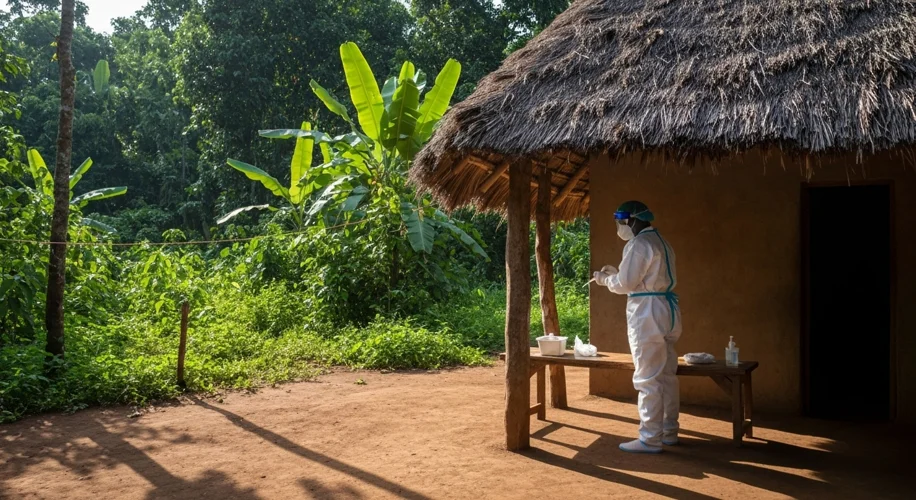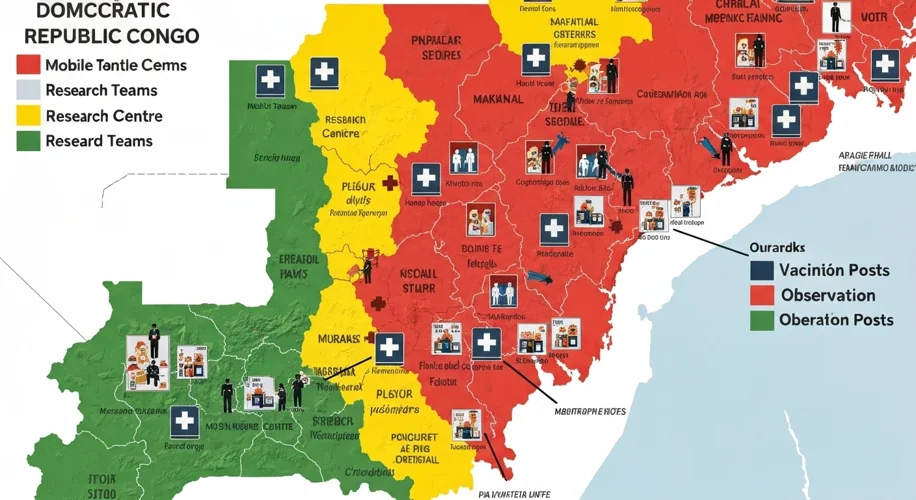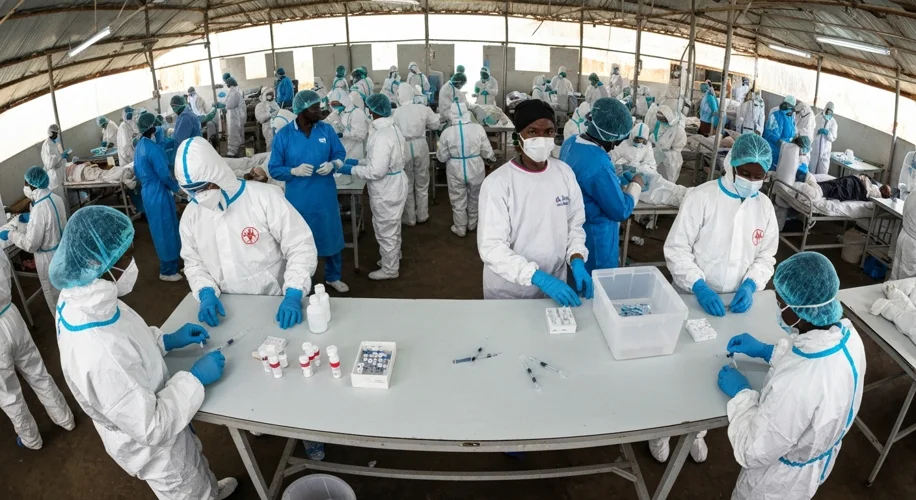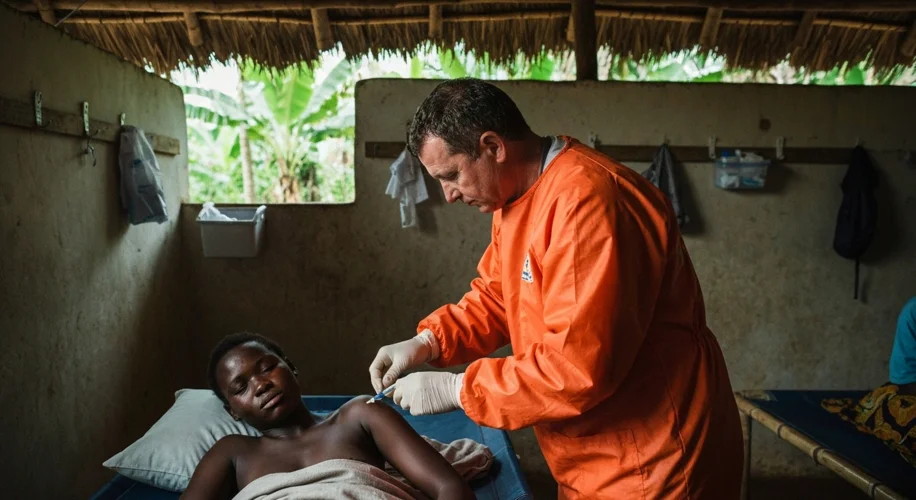The Democratic Republic of Congo (DRC), a nation vast and rich in resources, has for decades been a focal point for one of humanity’s most terrifying health crises: the Ebola virus. The specter of Ebola has haunted its populace, not as a distant threat, but as a recurring, devastating reality. This is the story of those outbreaks, the lives they touched, and the relentless pursuit of scientific and humanitarian salvation through vaccination.
The DRC’s history with Ebola is tragically long, stretching back to the very identification of the virus. In 1976, not one, but two simultaneous outbreaks occurred. The first was in Yambuku, a remote village in the DRC’s northern Équateur province, in a region then known as Zaire. The virus was named after the nearby Ebola River, a tributary of the Congo River. The initial cases were traced to a local school headmaster who, upon returning from a trip, fell ill with fever and vomiting. His illness spread rapidly through his family and the village. The second outbreak that same year occurred in Sudan, but it was the Yambuku outbreak that truly captured the world’s attention and tragically introduced the world to the horrors of Ebola.
The early response was characterized by a desperate scramble to understand and contain a virus whose lethality was terrifyingly apparent. The incubation period was short, the symptoms brutal – fever, severe headache, muscle pain, fatigue, diarrhea, vomiting, abdominal pain, and unexplained hemorrhage. Transmission occurred through direct contact with the blood, secretions, body fluids, and organs of infected people and animals. The speed and ferocity with which the virus spread through communities, often targeting healthcare workers who were trying to help, instilled a deep-seated fear.
Over the years, the DRC has faced numerous Ebola outbreaks, each one a stark reminder of the virus’s resilience and its devastating potential. The sheer scale of the country, with its challenging geography, limited infrastructure, and often-volatile political landscape, presents immense hurdles for containment. Remote villages, dense forests, and vast distances make it incredibly difficult to reach affected populations, trace contacts, and deliver essential medical aid.

The cycle of fear and loss continued through the late 20th and early 21st centuries. Notable outbreaks punctuated the DRC’s history, including significant events in 1995 (Kikwit), 2007-2008 (Kasia and Tandala), 2012 (Isiro), and then a series of more frequent and widespread outbreaks starting in 2014. These recurrent events underscored the urgent need for a more robust and proactive approach.
The scientific community recognized that the only sustainable way to combat Ebola was through the development of effective vaccines. For years, this was a monumental task. Ebola’s rapid mutation and its ability to jump from animals to humans (zoonotic spillover) presented complex challenges for vaccine researchers. The development process is rigorous, requiring extensive testing in laboratory settings and then in human trials to ensure both safety and efficacy.
A significant breakthrough came with the development of the rVSV-ZEBOV vaccine, manufactured by Merck (now MSD). This vaccine, a live-recombinant vesicular stomatitis virus (rVSV) expressing a surface glycoprotein of the Zaire ebolavirus, proved highly effective. The pivotal moment for its deployment came during the 2014-2016 West Africa Ebola epidemic, though it was first rigorously tested and deployed in the DRC.

The DRC’s 2018-2020 Ebola outbreak in the North Kivu and Ituri provinces was particularly challenging. It was the second-deadliest outbreak in history, and it occurred in a region already grappling with insecurity and armed conflict. This complex environment complicated containment efforts, vaccine distribution, and the work of frontline health professionals. Trust between communities and health workers was sometimes strained, further hindering the response.
Despite these immense difficulties, the DRC government, in collaboration with the World Health Organization (WHO), Médecins Sans Frontières (MSF), and numerous other international and local partners, mounted an unprecedented vaccination campaign. The strategy involved a ‘ring vaccination’ approach, where individuals who had come into contact with confirmed cases, and those who had cared for them, were offered the vaccine. This targeted strategy aimed to break the chains of transmission.

The vaccination efforts were not without their own hurdles. Cold chain management – ensuring the vaccines remained at the correct temperature – was critical, especially in remote areas. Educating communities about the vaccine’s benefits and addressing misinformation were also paramount. The dedication of local health workers and community volunteers who went door-to-door, often in dangerous conditions, to identify potential cases and administer vaccines, was nothing short of heroic.
The impact of these vaccination efforts has been profound. While Ebola remains a threat, the availability of a highly effective vaccine has transformed the response to outbreaks. It has provided a crucial tool to protect healthcare workers and vulnerable populations, and to bring outbreaks under control more rapidly. The scientific community continues to refine vaccine strategies and develop new therapeutic treatments, learning from each encounter with this formidable virus.
The shadow of Ebola still looms over the DRC, but it is a shadow that is increasingly illuminated by the light of scientific progress and unwavering human resilience. The story of Ebola in the Congo is a testament to the relentless pursuit of health security, the complex interplay of science and society, and the enduring spirit of those who fight on the front lines against this deadly disease.

